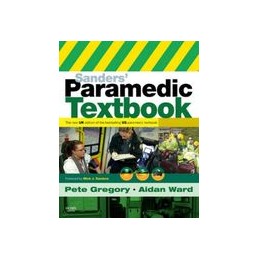- Obniżka


 Dostawa
Dostawa
Wybierz Paczkomat Inpost, Orlen Paczkę, DHL, DPD, Pocztę, email (dla ebooków). Kliknij po więcej
 Płatność
Płatność
Zapłać szybkim przelewem, kartą płatniczą lub za pobraniem. Kliknij po więcej szczegółów
 Zwroty
Zwroty
Jeżeli jesteś konsumentem możesz zwrócić towar w ciągu 14 dni*. Kliknij po więcej szczegółów
Fully adapted for the UK market by two paramedic lecturers and a team of highly-specialised contributors, Sanders Paramedic Textbook gives you everything you want in a paramedic textbook and more! Packed with valuable support materials this textbook is a comprehensive learning tool for both first time and refresher paramedic students containing everything in one convenient volume.
Opis
Part One: Emergency Medical Services (EMS) and ambulance operations in the UK. Ethics and law in paramedic practice. The well-being of the paramedic, health promotion and injury prevention. Part Two: Approaches to assessment. Communication systems in EMS. Therapeutic communication. Patient assessment. History taking. Techniques of physical examination. Differential impressions and clinical decision making. Documentation and record keeping. Part Three: Pharmacology, venous access and drug administration Part A Pharmacology Part B Venous access and medication adminstration. Part Four: Airway Management and ventilation. Part Five: Respiratory emergencies. Cardiology. Neurology. Endocrinology. Allergies and anaphylaxis. Gastroenterology. Urology. Toxicology. Haematology. Environmental conditions. Infectious and communicable diseases. Assessment and management of behavioural and mental health emergencies. Part Six: Trauma systems and mechanism of injury. Thoracic trauma. Haemorrhage and shock. Soft tissue trauma. Burns. Facial and head trauma. Spinal trauma. Abdominal trauma. Musculoskeletal trauma. Part Seven: Gynaecology. Obstetrics. Part Eight: Care of the Newborn. Paediatrics. Older persons. Abuse and Neglect. Community care: Patients with long-term health conditions, palliative care, dialysis. Part Nine: Major incidents. Hazardous substances incidents. Crime scene awareness. Chemical, biological, radiological and nuclear (CBRN) incidents. Part Ten: Glossary.
